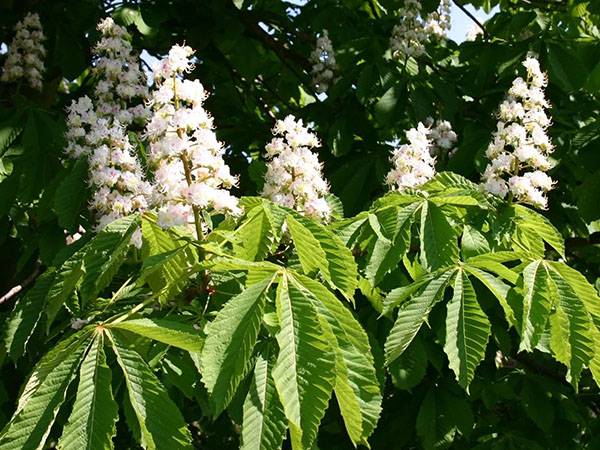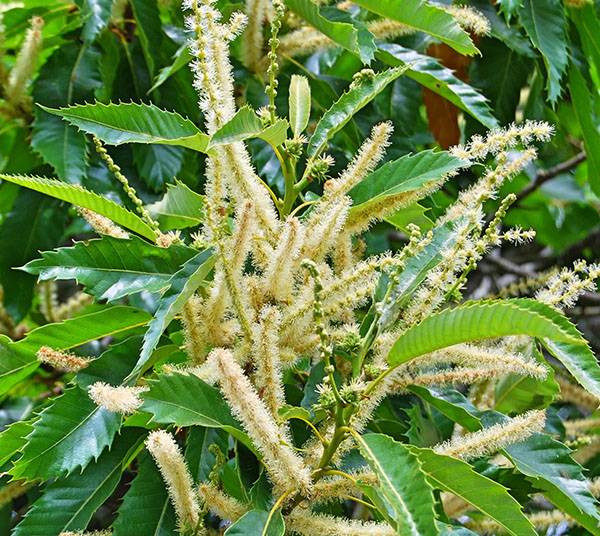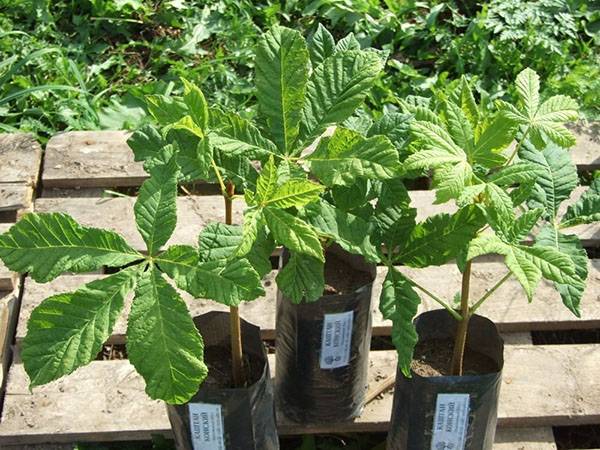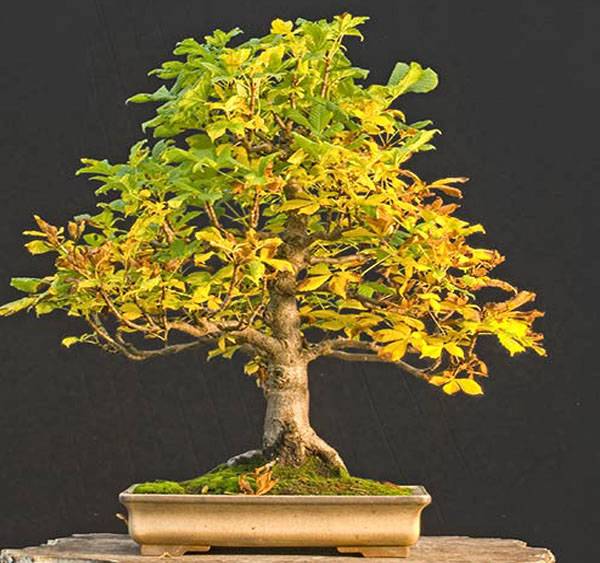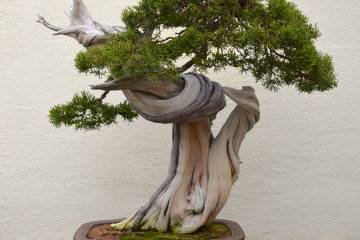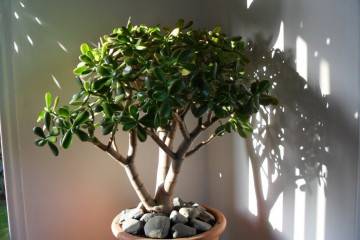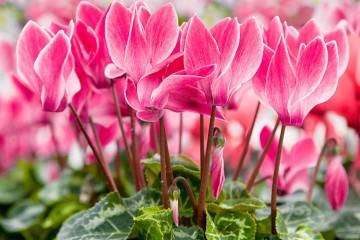Chestnut - a tree with flowers, a description of how to plant and grow
Content:
Large beautiful chestnuts are often found both in the wild and in city squares. Picturesque trees with a spreading crown and a powerful root system are especially delightful at the time of flowering. And in the fall, peculiar fruits look elegant.
Chestnut - a tree with flowers
The word "chestnut" refers to two species belonging to different families:
- horse chestnut belonging to the Sapindov family;
- sowing (edible, real) - a representative of the beech family.
Horse chestnut
These trees love warmth, so they are most common in regions with a mild climate. Cultivated in the southern and middle zones of the European part of Russia.
When the chestnut blossoms, it is impossible to take your eyes off it. In May, the whole tree is decorated with erect racemes of white bell-shaped flowers with pink spots. The inflorescences rise upward, resembling large white candles. You can admire how the horse chestnut blooms at the beginning of summer.
By crossing horse and red chestnuts, breeders have obtained a delightful hybrid, the inflorescences of which are painted in spectacular shades of red. Flowering in this species is long, the chestnut tree begins to bloom in April and ends in June.
The chestnut looks like a tall tree with a dense crown. Large leaves on long petioles, narrowed at the base, palmate. The plant is extremely decorative and is widely used for landscaping settlements, and is also often planted in summer cottages.
The fruit is a tricuspid spherical capsule about 6 cm in diameter, yellow-green in color with soft thorns. The nut-like seed is usually one - brown, shiny, with a yellowish flesh. Horse chestnut fruits have a bitter taste, therefore they are not suitable for food.
The bark and seeds contain glucoside and saponins and are widely used in pharmaceuticals. Medicines based on this plant are used to treat burns and vascular diseases.
Sowing chestnut (real or edible)
Description of the tree Edible chestnut is slightly different from the horse. A powerful tree up to 30 m tall, resistant to strong winds due to the branched root system. The crown is spreading, especially when grown alone. The edible species is widespread in the deciduous forests of the Caucasus. Cultivated in the Crimea and in the south of the European part of Russia. Residents of these regions know how to germinate a chestnut and why its wood is valued - it is easily processed and has an expressive texture.
The leaves are beautiful, elongated, pointed, with teeth at the edges. The bark is dark, young shoots are reddish-brown, sometimes pubescent. The buds are large, dark brown, ovoid. The trunk of the tree is powerful and wide.
In early summer, chestnut flowers appear, similar to earrings. At their base, the flowers are female, and above are the male ones. The plant is melliferous, pollinated by bees, but there is also a possibility of wind pollination.
The fruit is round, most often single-seeded, with a dark brown, shiny pericarp. The nut surrounding the nut is green, woody, with long needles; it cracks when the fruit ripens
Edible chestnut is a valuable tree species. Its nuts are rich in vitamins C and B, especially their high content in unripe fruits.
Features of growing chestnut
Mature trees propagate both by cuttings and by seed. To propagate the plant by cuttings, branches 20-40 cm long with blossoming buds are cut in the spring. The planting material is treated with a growth stimulant (for example, "Epin"). Then the cuttings are buried in the ground and watered. About half of the seedlings take root.
Growing chestnuts from a nut
Before planting chestnuts, you need to choose high-quality planting material. Ripe nuts that have fallen to the ground are suitable for reproduction. More fruits are picked than the planned number of seedlings, since not all germinate. The fruits are carefully examined. They should be undamaged, dark brown, glossy.
There are three methods of chestnut seed reproduction:
- sowing in the open ground in spring;
- preliminary germination of fruits and spring planting of seedlings;
- planting chestnuts in the ground in autumn.
Before spring planting, the fruits are soaked in water at room temperature to soften the peel. Then the nuts are planted in open ground to a depth of 5 cm and moisten the ground. Watering regularly, in extreme heat shade sprouted young shoots.
Sometimes, to increase germination, before planting walnut chestnuts in open ground, it is germinated at home. The fruits harvested in the fall are stored in the refrigerator or basement. The nuts should be in slightly damp sand. At the end of winter, they are taken out, soaked in warm water with the addition of potassium permanganate, then placed in wet sand and placed in a warm, bright place. After two weeks, the sprouts that have hatched are planted in pots with soil. In the spring, when the weather is warm, the grown seedlings can be transplanted to a place of permanent growth.
When planting a nut in open ground in the fall, it is also pre-soaked. Then the nuts are placed in holes made in the ground at a distance of 20 cm from each other. In the spring, seedlings are thinned out, leaving the strongest plants. It can be transplanted to a permanent place after 3 years.
The specifics of planting seedlings
Over time, there will be a thick shadow under the crown of an adult plant, so you should not plan a flower bed or garden there. You can organize a recreation area or a place for children's games under an adult tree, where it will be cool and comfortable even in the hottest.
You can plant chestnuts both in spring and autumn. The land in the place where the seedling is planned to be planted must be loose. Water stagnation is contraindicated for this plant. Sand is added to dense soil as a baking powder.
It is advisable to plant seedlings in open ground for two or more years. In the first year, the plants are still weak, they may not survive the winter. Therefore, seedlings of the first year are often carried out in the spring outside in pots, and on the eve of cold weather they are brought into the room.
For seedlings, prepare a pit with a layer of sand to drain excess moisture. A plant is placed in the depression and covered with a mixture of earth and humus. The root collar should be about 7 cm above ground level. The soil is tamped and watered with warm water.
Care of young trees
How quickly the chestnut grows depends on the grooming. In general, this plant is unpretentious. Young trees may need to be supported so that they are not damaged by the wind.They are tied to pegs driven in at a distance of 10-15 cm from the plant. In the first three years, seedlings require timely watering and loosening. When the chestnut root system is finally formed, the plant will be able to provide itself with moisture on its own. Weeding is carried out as necessary, freeing the land from weeds.
Top dressing is carried out in spring and autumn. Organic and mineral fertilizers are introduced into the soil, which are necessary for a developing tree. You can mulch the root area using humus. In the spring, the tree is pruned, removing dried and diseased branches. Over time, they begin to form a crown, shortening the shoots by a quarter of the length.
The plant is regularly inspected. Although the chestnut is resistant to disease, fungal diseases sometimes attack it. The appearance of powdery mildew is signaled by a white bloom on the leaves, and brown spotting appears as reddish-brown spots. The diseased plant is treated with fungicides, and the affected branches are removed.
The chestnut moth is a tiny butterfly, no more than 5 mm in length. However, it does enormous harm to chestnut plantings. In a short time, up to 90% of the leaves are destroyed. It is important to apply an insecticide at the first signs of damage.
Chestnut bonsai
Fascinated by miniature plants, gardeners can grow a dwarf tree at home. For bonsai, horse chestnut is more suitable, as a more hardy and decorative species.
You can grow a miniature chestnut like an ordinary one - from a nut. The preparation of chestnuts for bonsai is traditional - they are soaked. Nuts with softened peel are planted in separate pots and for the first two years they are grown as an ordinary houseplant. Then bonsai begin to form. The seedling is taken out of the pot and the roots are cut inward. The root system should be wide.
A special soil for bonsai is poured into a prepared shallow container and a plant is planted. Water in moderation, increase watering in summer. For the correct formation of the trunk and branches, wire is used, fixing parts of the plant in the desired direction. To form a spectacular crown, pruning is carried out. In spring, the branches of the miniature chestnut are shortened, and powerful central shoots are also cut out to stimulate dormant buds.
Bonsai is transplanted every two years. In this case, the roots are shortened, and the soil is completely replaced. It is advisable to carry out the procedure in spring or autumn. Growing bonsai is a long process. If the plant is well cared for, it can bloom after 10 years.
The demand for chestnut in landscape design is growing from year to year. All species are expressive in a single fit and harmonious in compositions. They are used to decorate parks and gardens. The partners in the compositions can be trees and shrubs, the shape and color of the foliage contrasting with the chestnut. For example, willow or conifers.

